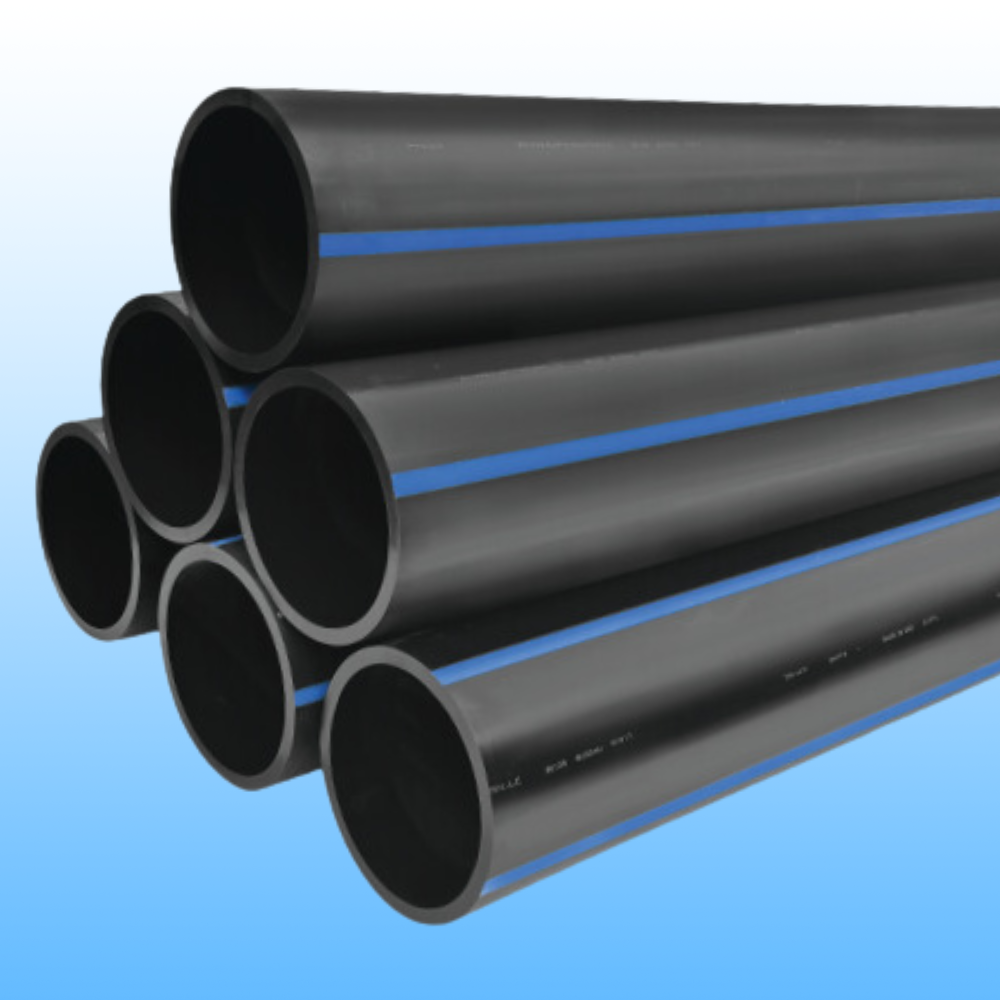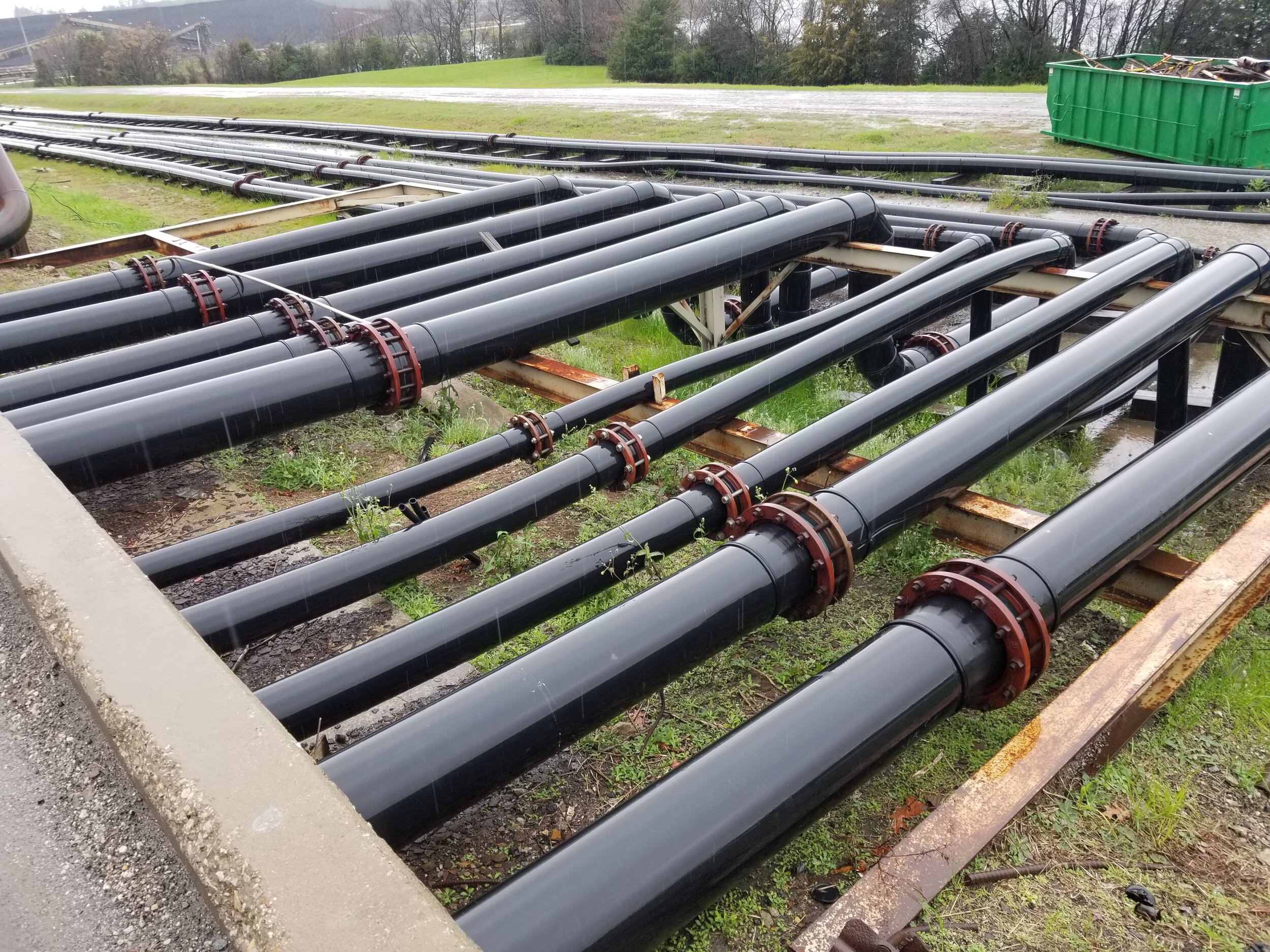American Plastics HDPE Pipe for Oilfield: Preferred in the Oilfield
Wiki Article
Discover the Manufacturing Refine Behind High-Quality HDPE Pipe and Its Applications
The manufacturing procedure of high-quality HDPE pipes is elaborate and methodical. It begins with the selection of basic materials that enhance efficiency. Following this, ethylene undertakes polymerization to create material, which is after that shaped via extrusion. Quality assurance is critical, ensuring that the end product meets strict standards. The journey of HDPE pipelines doesn't finish with manufacturing. Their applications across different sectors reveal a broader significance worth checking out.Understanding HDPE: Characteristics and Advantages

High-density polyethylene (HDPE) is a functional polycarbonate understood for its resilience and resistance to different ecological aspects. This material shows superb tensile strength, making it appropriate for requiring applications. Its low-density framework adds to a lightweight product, promoting convenience of dealing with and setup. HDPE likewise showcases remarkable resistance to chemicals, which minimizes degradation when revealed to rough materials.
The material's low dampness absorption better boosts its durability, making it ideal for use in pipelines and storage space tanks. In addition, HDPE is immune to ultraviolet (UV) radiation, making sure that items maintain their honesty also when subjected to sunlight. Moreover, its flexibility enables the creation of intricate shapes without compromising stamina. The eco-friendly nature of HDPE, usually obtained from recycled products, adds to its allure, advertising lasting techniques in manufacturing. Generally, these homes and benefits make HDPE a favored choice for numerous commercial and consumer applications.
Basic Material Option for HDPE Manufacturing
The selection of resources for HDPE manufacturing is important to validate the last product meets the desired specifications and high quality requirements. High-density polyethylene (HDPE) is primarily generated from polymerized ethylene, acquired from nonrenewable fuel sources such as gas or petroleum. The high quality of these feedstocks greatly affects the mechanical and thermal homes of the final HDPE.Additives additionally play a substantial duty in boosting HDPE's performance, including antioxidants, UV stabilizers, and colorants, which boost sturdiness and resistance to environmental factors. The option process must take into consideration not just the chemical structure of the raw materials yet additionally their processing qualities to ensure effective production.
Additionally, the sourcing of resources ought to prioritize sustainability and compliance with ecological policies, as liable techniques are crucial in today's market. Ultimately, cautious resources option lays the structure for creating top quality HDPE pipelines suitable for diverse applications.
The Extrusion Process: Forming HDPE Pipe
The extrusion procedure plays a vital function fit HDPE pipes, beginning with careful product prep work methods that ensure optimal flow and uniformity. Equally important is the layout of the die, which straight influences the final measurements and surface area top quality of the pipe. Together, these factors contribute considerably to the effectiveness and high quality of HDPE pipeline production.Product Preparation Methods
Efficient production of HDPE pipelines starts with meticulous product prep work strategies, especially the extrusion procedure. Throughout this phase, high-density polyethylene material is first dried to remove moisture, making sure excellent flow characteristics. The material is after that fed right into the extruder, where it goes through heating and melting, changing right into a thick state. This home heating process is carefully controlled to keep the product's integrity and efficiency. The molten HDPE is forced via a die, forming it right into a constant pipe type. Correct temperature level administration during extrusion is necessary, as it directly impacts the material's residential or commercial properties and the last item high quality. Once shaped, the HDPE pipeline is cooled down and reduced to defined sizes, ready for subsequent processing and applications.Die Style Importance
Precision in die style plays an essential function in the extrusion procedure of HDPE pipelines. The die acts as the last shaping device, straight influencing the pipeline's dimensions, wall surface density, and surface finish. A well-designed die assurances uniform material circulation, reducing defects such as irregularities and weak points. The geometry of the die have to be enhanced to fit the particular buildings of HDPE, including its thickness and thermal actions throughout extrusion. In addition, the cooling rate of the product as it passes via the die can markedly influence the pipeline's structural honesty. Spending in innovative die innovation is vital for makers aiming to create top notch HDPE pipes that fulfill market criteria and customer assumptions.Quality Assurance Procedures in HDPE Manufacturing
Although numerous factors affect the quality of HDPE pipe production, efficient quality assurance steps are crucial to ensure consistency and dependability in the end product. Trick high quality control techniques include extensive product inspection, verifying that the raw polyethylene fulfills well-known requirements for purity and thickness. During the extrusion procedure, specifications such as temperature level, pressure, and cooling time are carefully checked to preserve dimensional accuracy and architectural integrityFurthermore, post-production testing is vital; suppliers often carry out hydrostatic examinations to examine the pipeline's toughness and resistance to stress. Aesthetic assessments for surface area flaws additionally improve quality control. Accreditation from appropriate criteria companies, like ASTM or ISO, gives an added layer of reliability. By carrying out these detailed quality assurance measures, producers can reduce problems, enhance performance, and make sure that the HDPE pipelines satisfy the specific needs of different applications, ultimately bring about client fulfillment and depend on in the product.
Applications of HDPE Pipeline Throughout Industries
HDPE pipes are utilized throughout different sectors due to their toughness and convenience. In water distribution systems, they guarantee efficient delivery, while in wastewater administration, they offer trustworthy solutions for waste transport. Additionally, agricultural watering networks take advantage of HDPE's resistance to rust and adaptability, making it an ideal option for modern farming methods.
Water Circulation Systems
A significant number of markets count on high-density polyethylene (HDPE) pipelines for reliable water circulation systems. Recognized for their durability and resistance to rust, HDPE pipelines are commonly utilized in community supply of water networks, agricultural irrigation, and commercial applications. Their light-weight nature helps with very easy handling and setup, reducing labor expenses and time. Additionally, HDPE pipes can suit various stress degrees, making them suitable for both low and high-pressure systems. Midland TX HDPE Pipe Fittings in Stock. The adaptability of the material allows for smooth combination into existing framework, lessening the need for extensive excavation. Furthermore, HDPE's resistance to chemical seeping guarantees that the water supplied stays safe and tidy, making it an optimal choice for preserving the quality of safe and clean water across numerous marketsWastewater Management Solutions
Effective water distribution systems also lead the way for innovative wastewater administration services, where high-density polyethylene (HDPE) pipelines play a considerable function. Distinguished for their durability and resistance to corrosion, HDPE pipelines are perfect for delivering wastewater in different setups. Their flexibility enables easy installation in complex environments, decreasing the demand for extensive excavation. In addition, HDPE's smooth indoor surface area decreases friction, enhancing circulation prices and efficiency. These pipes are likewise resistant to chemical leaching, guaranteeing that pollutants do not endanger the surrounding setting. Industries, municipalities, and therapy facilities increasingly rely upon HDPE pipes for their integrity and durability, making them a preferred selection for modern wastewater monitoring systems. This versatility underscores the important significance of HDPE pipelines across various applications.Agricultural Irrigation Networks
Agricultural watering networks benefit substantially from making use of high-density polyethylene (HDPE) pipelines, which offer efficient and dependable water delivery to crops. HDPE pipelines are lightweight, making them easy to move and set up, while their adaptability permits various arrangements in varied surfaces. These pipes demonstrate excellent resistance to corrosion, chemicals, and UV radiation, ensuring resilience in severe agricultural atmospheres. In addition, their smooth interior surface area lessens friction loss, optimizing water circulation and reducing energy prices linked with pumping. The longevity of HDPE pipes, frequently going beyond 50 years, adds to decrease maintenance and substitute expenditures. Consequently, farmers significantly depend on HDPE pipes to boost watering efficiency and advertise lasting agricultural practices, eventually bring about improved crop returns and source conservation.Future Fads in HDPE Pipe Modern Technology
As the need for sustainable and reliable facilities expands, improvements in HDPE pipe modern technology are poised to change different sectors. Emerging fads include the integration of wise technologies, such as sensing units and IoT abilities, which facilitate real-time tracking of pipe problems, reducing upkeep prices and stopping leaks. Furthermore, the development of innovative manufacturing methods, such as 3D printing, is allowing the production of facility, tailored pipe styles that deal with particular task demands.Additionally, the concentrate on recycling and round economy techniques is driving the innovation of HDPE pipes made from recycled products, boosting sustainability. Enhanced jointing methods, such as electro-fusion and mechanical fittings, are likewise boosting installment efficiency and dependability. Lastly, the expanding focus on ecological regulations is pushing makers to take on greener manufacturing procedures, ensuring that HDPE pipes not only satisfy sector criteria yet also foster a more sustainable future for facilities advancement.
Often Asked Questions
Exactly How Does HDPE Contrast to Other Plastic Products?
HDPE hdpe pipe in stock Midland TX outshines several various other plastic products regarding sturdiness, chemical resistance, and adaptability. Its reduced thickness and high tensile strength make it optimal for numerous applications, often surpassing options in both efficiency and long life.What Are the Ecological Effects of HDPE Production?
The environmental influences of HDPE manufacturing consist of greenhouse gas emissions, energy intake, and potential air pollution from manufacturing procedures. Additionally, improper disposal can bring about soil and water contamination, raising worries regarding long-term ecological effects.Can HDPE Pipes Be Reused?
Yes, HDPE pipelines can be recycled. Lots of facilities approve utilized HDPE for handling, transforming it into new items. This recycling adds to sustainability efforts, lowering plastic waste while saving sources and energy in the production cycle.What Is the Life Expectancy of HDPE Pipes?

How Do Temperature Level Variants Impact HDPE Pipe Efficiency?
Temperature level variations significantly impact HDPE pipeline efficiency, impacting flexibility and toughness. High temperature levels can cause softening, while low temperatures might trigger brittleness, eventually influencing the pipe's durability and viability for numerous applications in varied environments.Report this wiki page